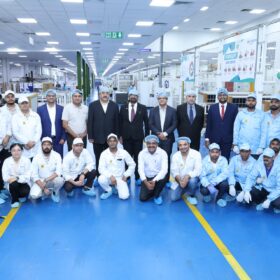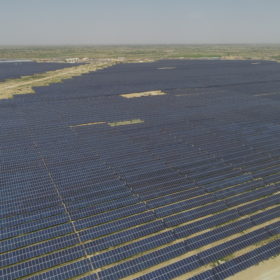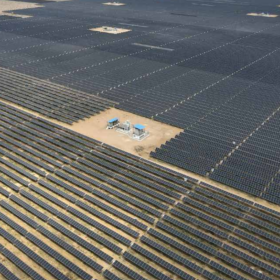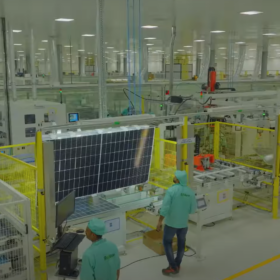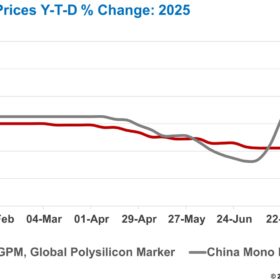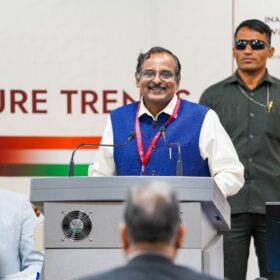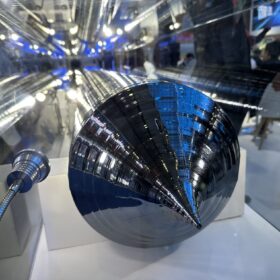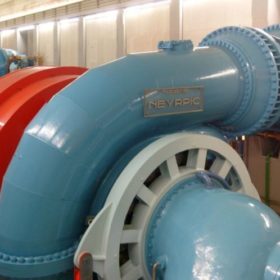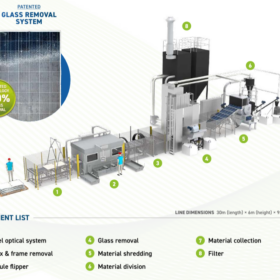Jakson Group hosts Sri Lankan and Maldivian ministers at Greater Noida solar facility
Kumara Jayakody, Minister of Energy, Government of Sri Lanka, and Muaviyath Mohamed, Minister of State, Environment and Tourism, Maldives, recently visited Jakson Group’s fully automated solar module manufacturing facility in Greater Noida to witness its advanced capabilities and explore avenues for clean energy partnerships.
ACME Solar’s 250 MW renewable energy project secures “ICRA AA-/Stable” rating upgrade
The rating applies to ACME Aklera Power Technology’s 250 MW renewable energy capacity in Rajasthan for its INR 1,072 crore term loan facility from Bank of America, Standard Chartered Bank and India Infradebt Limited.
A tightened U.S. solar trade environment
Tariffs, foreign content restrictions, and antidumping and countervailing duty investigations have reshaped the landscape for imports of solar components and manufactured products.
India expected to add over 45 GW of solar capacity in FY 2026: SBICAPS
India installed 18 GW of solar power capacity in the first five months of FY 2026 and is on track to add over 45 GW during the fiscal year, according to a new report by SBICAPS.
Carbon as collateral: The next big idea in consumer lending for green assets
Carbon as collateral represents a practical financial innovation that can influence the pace of sustainable adoption in India. It assigns clear monetary value to environmental benefit and integrates this into consumer lending models. With appropriate regulatory backing and reliable accounting systems, the idea holds potential to expand credit availability, reduce cost barriers and support national climate commitments while creating long term economic opportunities.
ReNew reduces solar module, cell prices following GST cut
ReNew Energy Global Plc (ReNew) has announced price reduction in its solar modules and cells, following the Government of India’s landmark decision to lower goods and services tax (GST) on renewable energy equipment from 12% to 5%, effective September 22, 2025.
Why smart metering is the unsung hero of India’s solar push
At their core, smart meters are data engines. They provide utilities with visibility into how, when and where electricity is consumed. That granular knowledge allows grid operators to forecast demand more accurately, balance loads and absorb greater volumes of variable solar generation. Without it, the grid risks becoming brittle, prone to blackouts when clouds pass over solar farms or demand surges unexpectedly.
L&T signs MoU with ACWA Power for EPC of renewables and grid infrastructure at Yanbu Green Hydrogen Hub
Larsen & Toubro has signed a Memorandum of Understanding with ACWA Power for engineering, procurement and construction of the renewables and grid infrastructure at the Yanbu Green Ammonia Project in Saudi Arabia.
China polysilicon prices climb 50.7% from July low despite growing inventories
In a new weekly update for pv magazine, OPIS, a Dow Jones company, provides a quick look at the main price trends in the global PV industry.
The Hydrogen Stream: “Hydrogen to play transformative role in India’s space missions, transportation, and clean energy future,” says ISRO Chairman
Hydrogen is set to play a transformative role in India’s space missions, transportation, and clean energy future, said Dr. V. Narayanan, Chairman, Indian Space Research Organisation (ISRO), at a National Workshop on “Hydrogen Fuel Technologies and Future Trends” held at Alliance University, Bengaluru, in association with Indian Institute of Science.
